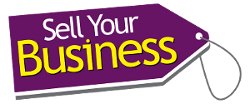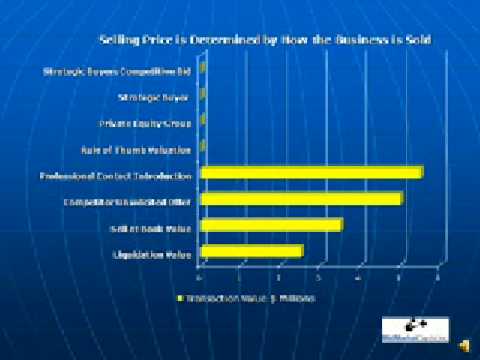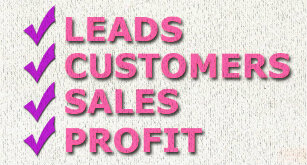
Over 75% of business fail within 10 years
According to the U.S. Small Business Administration, approximately 50% of all new businesses survive five years or more and about one-third last 10 years or more. That means that only 25% of businesses last for longer than 10 years. Yikes!
Considering the high rate of failure, wouldn’t it be in every business owner’s best interest to consider an exit plan within 5 years or 10 years at most? Seriously – to beat the probability of failure doesn’t it make sense to set up a business with the sole intention of selling it before it fails?
I might sound a bit cynical here but let’s face the facts – you have a 50% chance of being around after 5 years and your probability for success diminishes the longer you own your company.
Is it possible to create a company for the sole intention of selling?
Starting and growing a business myself, I know first-hand that there’s simply not enough time to grow a business and consider an exit plan. When I first started, my plan was to build my company for 3 – 5 years and then sell it. After 8 years of work, work, work I consider myself lucky to have been successful (financially – not mentally!) yet the company was in no shape to sell. Fortunately for me, I exited through a management buyout; otherwise I fear I’d be in the loony bin right now. I loved my company, but I was so tired of running it.
The gurus all say to start with the end in mind. They highlight the importance of planning an exit before you start, yet it’s hard enough to plan a forecast for 12 months. Things change so quickly – technology helps or hinders your business. New regulations are forced upon you. Recessions hit. And of course, business owner life gets in the way – income targets need to be met, salaries have to be paid, HR issues have to be managed and the plates have to keep spinning.
It’s not about thinking with the end in mind (which could be to exit your business) – it’s more about thinking how to reach the end with a mind!
How can you grow your company, exit your business and keep your sanity?
I think there are several solutions to reduce the likelihood of business and/or personal failure, so all is not lost.
- If you haven’t yet started (or are just starting) a business, make darn sure that you’re super passionate about your product/service in addition to running a company. I’m positive that many businesses fail because business owners are chasing money rather than creating an offering that they truly feel passionate about. Every business owner that I know that’s had a business over 10 years absolutely loves what they do. (I admit it, I chased the money, I had very little passion for the product/service I offered.)
- If you currently own a business and are getting tired of it, it’s only going to get worse, so start thinking about an exit now! There are so many things that can be done. You can pull yourself out of the business while teaching others to run it, you can consider succession planning – setting up family member to take over or perhaps getting it ready to sell. The key here is don’t wait until you burnt-out. (I admit it – I waited until I was burnt-out and it wasn’t a pretty sight).
- Don’t pretend that you’re happy. In today’s age of positive thinking we business owners give ourselves pep talks all the time. We tell ourselves we’re happy, we’re successful, and we’re the rulers of our own dominion. Additionally, we feel a pang of guilt to admit we’re unhappy with our situation. Heck – who are we to complain? We’re our own boss, we control our pay check, we can come and go as we please. It took sheer determination and tenacity to get our business going – we can’t allow ourselves to think we’re not happy about the destination we’ve created! Can we? You can only pretend for so long. Sooner or later you’re going to have to feel the truth. (I admit it – I pretended I was happy. Everything in my world was smiley faces. It wasn’t until one day when a mentor asked me what I really wanted and my response was, FREEDOM! Up until then I was kidding myself).
- Learn the art of outsourcing and delegation. Most business owners, especially in the early days, think that no one can do the job they do as good as they do it. You’ll hear them saying, ‘I wish I could outsource this but it’s quicker for me to just do it myself. Furthermore, it will get done correctly.’ If you say these kinds of things, treat them as a massive warning! You cannot grow and eventually exit a business if you don’t remove yourself from the running of the business. To remove yourself from the running of the business, you must delegate or outsource. Growth is now about you working hard – it’s about you working smarter. (I admit it – no one could do anything as good as me, therefore I found it impossible to delegate. This in turn created a situation where I had to work longer hours and become more and more miserable).
- Take the time to understand what is truly important in life because if you think it’s your company, you’re on the wrong track. Our culture is so geared towards making money and owning houses, boats, cars and gadgets yet none of that makes our heart sing. Yes – money is important, but once you have ‘enough’ more money doesn’t make life better. The most important thing in life is love – it’s giving love and receiving love. And I’m talking about love from humans – not the love you give your company! When you’re on your death bed you’re not going to reflect back and wish you worked harder or earned more money. Relationships with your friends, family and community around you is what really matters. Whether your business fails or succeeds I can guarantee that having loved ones with you for the journey will make all the difference in the world. (I admit it – I was married to my company. Nothing else mattered. My friends were my employees. It wasn’t until I exited that I realized how removed I was from the most important things in life).
So there you have it. That’s Kim’s take on growing, exiting and staying sane through your company journey! Any comments? I’d love to hear your thoughts?
Kim Brown, Co-Founder of Business Wand, helps business owners navigate their way through the start to finish process of selling a business. Her specialty is to help owners cut costs and increase profits prior to sale. To understand how you can sell your business quickly for the highest sales price, purchase the book, “How To Sell A Business: The #1 guide to maximising your company value and achieving a quick business sale”





